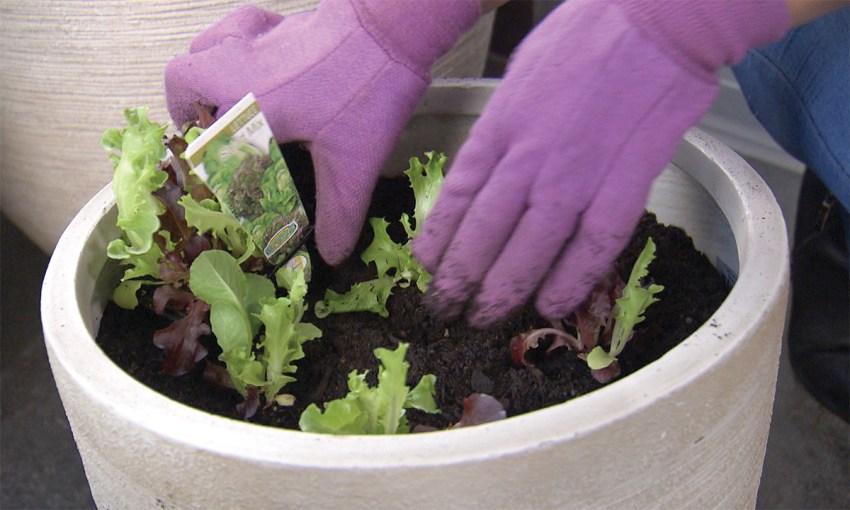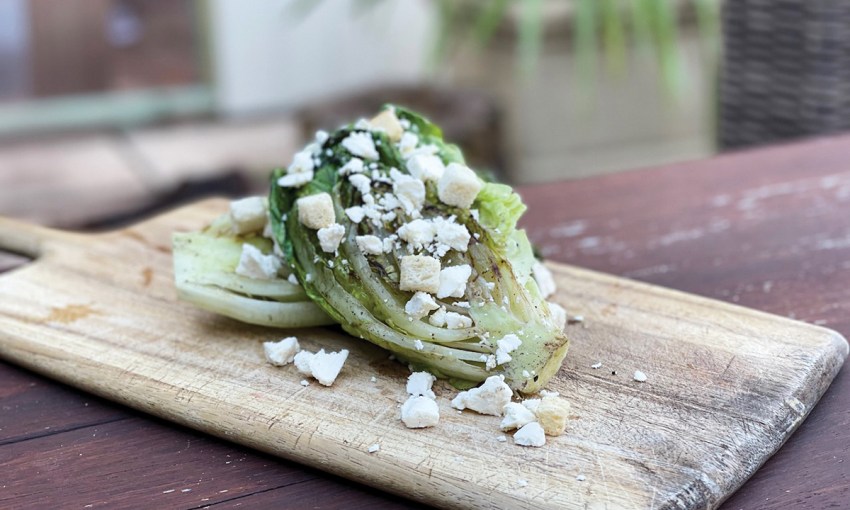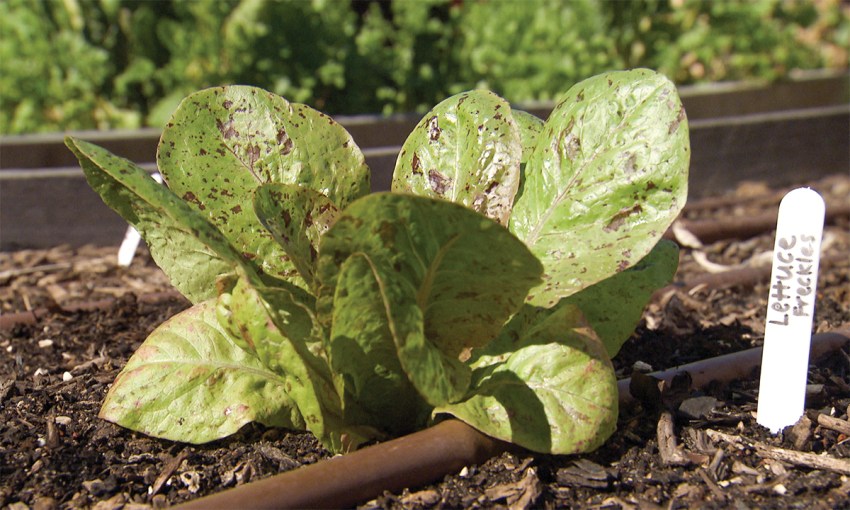Given the current price of our favourite salad veggie, it's worth remembering that we lucky South Aussies can grow it in our own gardens all year round.
Grow your own: Lovely lettuce
Whether you’re an avid gardener, a complete novice or somewhere in between, one thing everyone has in common is the ability to grow a crop of leafy lettuce.
Collected by hunter-gathers for millennia and cultivated in Ancient Egypt more than 5000 years ago, lettuce has a revered history. Immortalised in stone by Caesar Augustus, recommended to his fellow Grecians by Hippocrates and even featuring in Egyptian tomb paintings.
Now grown across the globe, lettuce is a mainstay in every cuisine, whether gracing a burger in Brooklyn, providing the bulk of a French green salad, cradling delicious san choy bow or providing the crunch in a Clapham curried egg sandwich, this is one very versatile leafy veg.
Surprisingly, lettuce is a member of the Asteracae family, being related to daisies, sunflowers, euryops, and chrysanthemums. Let your lettuce bolt, sending up a flower spike, and wait for a massed head of small daisy-like blooms to appear to understand its classification.
From a large plot to a single pot, the key to successful lettuce growing is picking the right variety for the right season.
Based on head formation and leaf structure, there are many different types of lettuce available for purchase either as ready-to-plant seedlings or amazing-value seeds at your local garden centre.
Iceberg (or “crisphead”) lettuces have a dense, cabbage-like head and pale green leaves. The common Iceberg variety has filled sandwiches and salad bowls for generations, its crunchy texture and mild sweet flavour continues to be a hit with adults and kids alike. Taking around 10-12 weeks to fully form, iceberg is best grown over the cooler months as summer heat tends to cause early bolting. Alternatively, Great Lakes Iceberg, a large, solid-hearted variety is crisp and sweet, and provides a good growing option over summer as it endures hot weather without running to seed.

Butterhead-type lettuces form a knot of sweet and succulent soft textured leaves. Buttercrunch has light green, tightly-bunched fan-shaped leaves that have a wonderful nutty flavour. As it rarely bolts, Buttercrunch makes an excellent summer lettuce option. Green Mignonette is an excellent garden variety, with small loose hearts surrounded by few outside leaves and is suitable for planting almost any time.
Cos (or Romaine) lettuce can be identified by its long, elongated leaf head. Having a crisp texture and slightly bitter taste, cos lettuce has traditionally been used in Caesar Salad. The Green Cos variety produces large, firm hearts with a crisp texture and good flavour. It is suitable for both spring and autumn sowing.
Loose-leaf lettuces are quick growing, open and heartless with mild and delicate flavoured leaves that can begin to be harvested after six weeks. Available in a range of colours from pale green to red, and often sold as a mixed punnet or seed collections, loose-leaf varieties are the easiest and least demanding lettuce to grow.
Heirloom lettuce varieties, available in seed packs through a number of online nurseries, are a brilliant way to expand your plant palette and add further interest and flavour to the menu. Freckles is an aptly-named bright green, upright-growing Cos lettuce with a unique confetti of crimson spots across its leaves.

Key to successful lettuce growing is finding a spot that gets at least six hours of sun a day and is protected from the late afternoon sun – especially through the heat of summer.
Lettuces love free-draining soil so that’s why they do so well in potting mix-filled containers.
When growing in the ground, add plenty of well-aged organics and commercial soil conditioners, plus a kilogram of gypsum per square metre for clay soil. The richer the soil the better.
“Plant it and they will come” is a very apt phrase when it comes to lettuce seedlings – and the impending caravan of ravenous snails… It is vital to deter or decrease their numbers.
Baits such as OCP Eco-shield Organic Snail & Slug killer, with iron as its active ingredient, are approved for use in organic gardens, while barriers and traps are also well worth installing.
Growing lettuce from seed offers great value. It also allows you to try out a huge range of varieties not normally available as off-the-shelf seedlings.
The tiny lettuce seeds can be sown directly into the veggie garden and thinned out later or started in a container of seed raising mix and transplanted when they are three to four centimetres high. Planting out a new crop every four weeks will ensure a never-ending supply of healthy fresh lettuce.
As lettuce is a quick grower, it needs a steady amount of food to produce a dense head of leaf. Liquid fertilisers such as Thrive Vegie & Herb, Nitrosol Liquid Plant Food or PowerFeed Plant Food provide a soluble burst of nutrients.
The better lettuce grow, the better their appearance and flavour.

Picking lettuce is best done in the morning when leaves are cool and crisp. Harvest iceberg varieties when the heart feels full and firm by pulling up the whole plant and trimming off the roots.
The outer leaves of butterhead, cos and loose-leaf types can be picked as needed leaving the inner leaves to continue to grow and mature. Alternatively, you can cut off the entire plant leaving three to four centimetres of base above the soil. This stub can regrow and provide a later second harvest.
Once picked, if leaves are loose, wash, lay on a tea towel and gently pat dry, or use a salad spinner. For a full head of iceberg or cos, dunk it into a sink of cold water to clean out any soil or grit then allow to stand and drain.
To keep leaves fresh and reduce spoilage, store in a dedicated lettuce container or add a paper towel to the plastic bag, seal and place in the crisper section of the fridge.
Cutting lettuce with a metal knife causes edges to brown. If wanting neat strips, use a serrated plastic lettuce knife to reduce that unsightly look and spoiling. It’s best to tear leaves by hand.
Lettuce doesn’t need to be just a salad hero, use it as a wrap, or grill, braise, add to soups or blend into your next smoothie, there are loads of interesting ways to add lettuce to your cuisine.

Barbecue-grilled cos
2 heads of cos lettuce
3 tbsp olive oil
salt
black pepper
Cut each head vertically to leave two halves. Brush each lettuce half all over with olive oil, then add a small pinch of salt and good grind of black pepper. Place cut-side-down on barbecue grill for three minutes, pressing with the tongs to give a good sear. Turn over and grill for two more minutes. Remove and drizzle with remaining olive oil. Add more salt and pepper to taste. Add your choice of toppings – shaved parmesan, dollops of blue cheese, cooked bacon – the choices are deliciously endless!
This article first appeared in the Autumn 2022 issue of SALIFE Gardens and Outdoor Living magazine.



